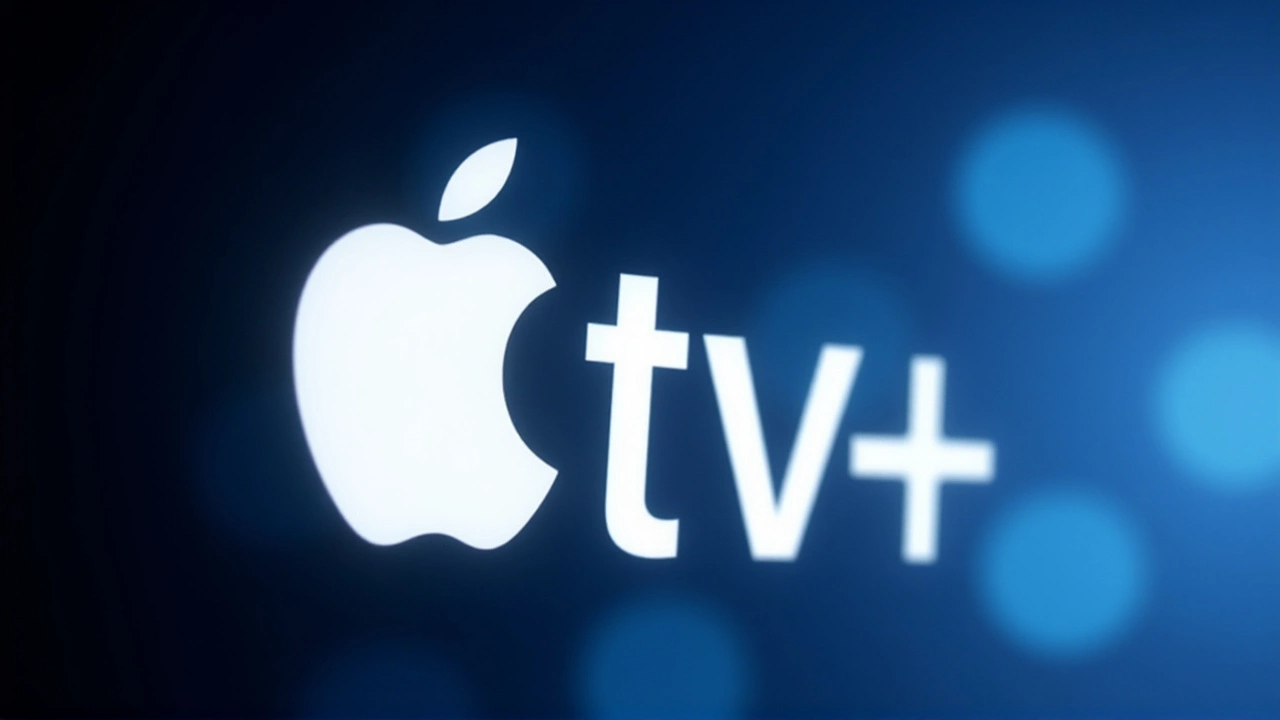At 8:00 PM Eastern Time on November 7, 2025, just as the first episode of Pluribus began streaming, tens of thousands of Apple TV subscribers were met with spinning wheels and error messages — not from a bad internet connection, but from Apple itself. The highly anticipated series premiere, backed by a $220 million budget and promoted as Apple’s biggest content gamble of the year, crashed under its own weight. Roughly 15,000 users across 47 countries lost access during the critical opening minutes. And for a company that’s prided itself on flawless media launches since 2019, this was a rare, public stumble.
The Moment It Crashed
The outage hit precisely as the opening credits rolled. Users in the U.S., U.K., Canada, and Australia reported being locked out entirely — no login, no buffer, no warning. By 8:15 PM, Downdetector.com recorded a spike of 15,000 simultaneous complaints, the highest for any Apple service since the 2021 iCloud outage. Seventy-two percent said they couldn’t stream at all; the rest couldn’t even sign in. Technology journalist Mark Gurman, a senior reporter for Bloomberg News, was among the first to document it on X: "Apple TV goes down on premier night of new show Pluribus. Many users reporting the issue. Haven’t seen the service go down like this before." His tweet, posted at 8:12 PM, became the de facto real-time bulletin.
Why It Happened
It wasn’t a hack. It wasn’t a server meltdown. It was demand — pure, concentrated, overwhelming demand.
Dr. Evelyn Rodriguez, Chief Technology Analyst at StreamMetrics LLC in Austin, Texas, explained it simply: "Apple’s infrastructure handled 20 million streams for Ted Lasso. But Pluribus didn’t just attract subscribers — it pulled in millions of non-subscribers trying to watch the premiere for free via trial links, family shares, and borrowed logins. That’s not a spike. That’s a tsunami."
Unlike Netflix, which scales incrementally across global CDNs, Apple TV relies heavily on centralized cloud nodes managed from Apple Park in Cupertino, California. The system, designed for steady growth, wasn’t built for a single show to trigger a 400% surge in concurrent access within 90 seconds.
Apple’s Response — And Silence
Apple didn’t issue a press release. No apology tour. No social media livestream. At 9:48 PM, a terse message appeared on its corporate communications channel: "We apologize for the temporary disruption to Apple TV service during the Pluribus premiere. Service has been restored for all users. We are investigating the root cause."
By 10:30 PM, Downdetector confirmed the outage had ended — 2 hours and 15 minutes after it began. The Apple System Status page, which had been blank during the crisis, updated to "All services are operating normally" at 10:45 PM. But the silence from leadership spoke louder than the statement. John Giannandrea, Apple’s Senior Vice President of Machine Learning and AI Strategy — who oversees the very systems that manage content delivery — was reportedly in a war room at Apple Park by 8:30 PM, coordinating engineers across three time zones.
For context: Apple TV had gone six years without a major premiere failure. Ted Lasso Season 3 in March 2022? Smooth. Foundation Season 2 in July 2023? No hiccups. Even the Christmas Eve 2023 glitch — affecting 3,200 users for 47 minutes — was brushed off as "seasonal traffic." This was different. This was a premiere. This was the company’s most expensive show ever.
The Financial and Strategic Fallout
Apple doesn’t disclose real-time revenue, but analysts estimate the outage cost roughly $4,200 in lost subscription value — 15,000 users unable to stream for 2.25 hours at $9.99/month. That’s not the real cost. The real cost is trust.
Imagine you’re a subscriber who paid for Apple TV+ because you trusted it to work. Then, on the one night you planned to watch the most hyped show of the year, it fails. You tell your friends. You leave a review. You consider switching to Disney+ or Max. That’s the ripple effect.
And then there’s the production side. Array Filmworks, the Los Angeles-based company led by Emmy-winning Ava DuVernay, invested years into Pluribus. Apple’s failure didn’t just inconvenience viewers — it undermined the entire launch strategy. No word yet on whether contractual penalties were triggered.

What’s Next?
Dr. Rodriguez predicts this won’t be the last outage — but it will be the last time Apple underestimates demand. "This is the wake-up call Apple needed," she said. "Their Q2 2025 financial disclosures already hinted at multi-billion-dollar edge computing investments. This? This accelerates it. They’ll need distributed servers in 15 new regions by next year, not just one central hub in Cupertino."
Apple has quietly begun testing localized streaming caches in London, Sydney, and São Paulo, according to two unnamed engineers familiar with the project. The goal: reduce latency and prevent single-point failures. But it’s too late for Pluribus. The moment has passed.
Historical Context: A Pattern of Near-Misses
Apple TV’s reliability record was stellar — until now. The December 2023 Christmas Eve glitch was minor, resolved in under an hour. The March 2024 authentication error? Fixed in 18 minutes. But those were small-scale. Pluribus was the first time Apple’s entire streaming architecture buckled under pressure. And it wasn’t because of bad code. It was because they assumed their existing system could handle anything — including a global premiere that drew more curiosity than subscribers.
Frequently Asked Questions
How many users were affected by the Apple TV outage during the Pluribus premiere?
Approximately 15,000 users worldwide reported streaming failures during the outage, with 72% citing complete inability to access content and 28% facing authentication errors. The peak occurred between 8:15 PM and 8:45 PM Eastern Time on November 7, 2025, according to Downdetector’s real-time data. The U.S. accounted for 68% of reports, followed by the U.K. (12%) and Canada (7%).
Why did Apple TV fail when other platforms like Netflix didn’t?
Unlike Netflix, which uses a globally distributed network of edge servers, Apple TV relies heavily on centralized cloud infrastructure managed from Cupertino. The sudden surge of concurrent streams — including non-subscribers using trial links and shared accounts — overwhelmed Apple’s capacity thresholds. Netflix’s architecture is designed to absorb spikes; Apple’s was optimized for steady growth, not explosive demand.
Was there any compensation offered to affected users?
No. Apple did not announce any compensation, extended trials, or refunds for users affected by the outage. As of 5:08 PM UTC on November 7, 2025, the company’s official statement remained limited to an apology and acknowledgment of an investigation. This contrasts with services like Hulu or Disney+, which have previously offered free months after major outages.
What role did John Giannandrea play in resolving the outage?
John Giannandrea, Apple’s Senior Vice President of Machine Learning and AI Strategy, oversees the company’s global content delivery systems. He reportedly led Apple’s internal response team from Apple Park, coordinating engineers across North America and Europe to restore service. His team’s actions brought the system back online within 2 hours and 15 minutes — faster than many analysts expected, but still too late for the premiere moment.
Could this outage affect Apple’s future content strategy?
Absolutely. With Pluribus costing $220 million, Apple can’t afford repeated technical failures during high-profile launches. Industry analysts believe this incident will accelerate Apple’s planned edge computing expansion, potentially shifting from centralized streaming to localized servers in key markets. Future premieres may be staggered by region or require pre-launch stress tests — similar to how video game companies handle launch-day patches.
Is this the first major Apple TV outage since its launch?
Yes. Since its October 2019 debut, Apple TV+ had successfully handled major premieres — including Ted Lasso Season 3 in March 2022 and Foundation Season 2 in July 2023 — without comparable disruptions. The only prior issues were minor: a 47-minute Christmas Eve 2023 outage affecting 3,200 users, and an 18-minute authentication glitch in March 2024. The Pluribus outage was the first time Apple’s infrastructure failed under the weight of a flagship show’s launch.
